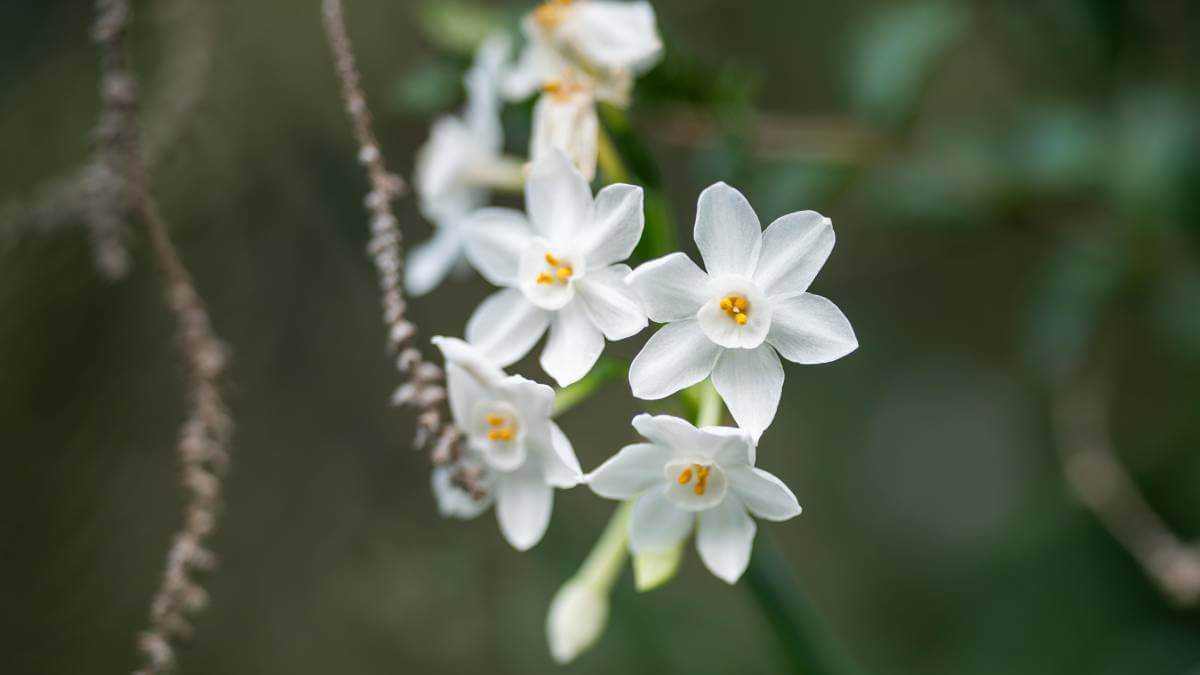Spring is still a good month off, but you would not know it by looking out of a window in some parts of Australia right now.
In Tasmania, spring bulbs are flowering and buds are on the trees after a few unseasonably warm weeks.
But it is not just affecting the southernmost state.
Climatologist Jonathan Pollock said average temperatures in July in some parts of Australia had so far been more typical of spring than the middle of winter.
“Temperatures have been unusually high for this time of year … it’s not just Tasmania. Parts of Victoria are also record warm for the first half of July, and most other parts of eastern Australia are warmer than average too,” he said.
Mr Pollock put it down to natural variability and climate change.
The higher temperatures were evident in Hobart this month when the city broke its July record for the highest overnight minimum temperature – hitting 13ºC.
Up on the summit of kunanyi/Mt Wellington, another record tumbled.
The mountain recorded its highest July daily maximum of 11.4ºC, well above the previous record of 9.8ºC in 1993.
Meteorologist Mick Conway said records had been set around Tasmania, with Swansea on Tasmania’s east coast recording an overnight record of 12.3ºC.
Launceston and Devonport also hit the record books in July, with overnight highs of 12ºC and 12.7ºC respectively.
‘Bizarre’ flowering of spring blooms
Garden writer and horticulturalist Jennifer Stackhouse said her garden near Sheffield in Tasmania’s north-west was behaving bizarrely this winter.
“The thing I’ve noticed is that some things are out a little bit earlier … I’ve got snowdrops that are all blooming at the moment,” she said.
“The other strange thing I’ve got is that we’ve got some iceberg roses that we pruned quite late in autumn, and they’ve been in full flower right through winter, which is bizarre.”
Blooming early could kill fruit crops
The horticulturalist is worried about fruit trees and other edible plants in the garden.
As flower buds develop, many species lose their ability to tolerate cold temperatures, which means a freeze could kill blooms and leave fruit crops vulnerable to spring freezes.
“If they start to come out early and then we get a cold snap and we lose the flowers, then you lose your crops,” she said.
“That early flowering could be a disaster.”
Worried customers
Southern Tasmanian nursery owner Andrew Clark said more and more customers were coming into his business worried about their deciduous trees that had not yet lost all their leaves.
“For instance, in the nursery we’ve had an ornamental pear that’s still had foliage on it and buds about to burst ready for spring … which is ridiculous,” Mr Clark said.
“I’ve been saying to customers … plants have got a rude shock coming, because … it’s going to get cold again,” he said.
“We’re kind of saying to people, just be careful of promoting new growth, because if you imagine when a plant explodes with all its new spring growth, that’s more tender to frost.”
And if you are worried about buds that have already formed on your precious trees, you might want to think about a protective spray.
“It’s going to be challenging [in the garden] but plants are resilient, they kind of find a way to adapt,” Mr Clark said.
The record temperatures come as climatologists get close to officially declaring an El Niño.
“It’s likely that we’ll have an El Niño and a positive Indian Ocean Dipole … and typically they bring higher-than-average temperatures to large areas of Australia during winter and more so spring,” Mr Pollock said.
 2020 Australian Broadcasting Corporation. All rights reserved.
2020 Australian Broadcasting Corporation. All rights reserved.
ABC Content Disclaimer


I’ve noticed shells from bird eggs and this morning saw a blackbird going into some bushes so maybe they think it’s Spring.